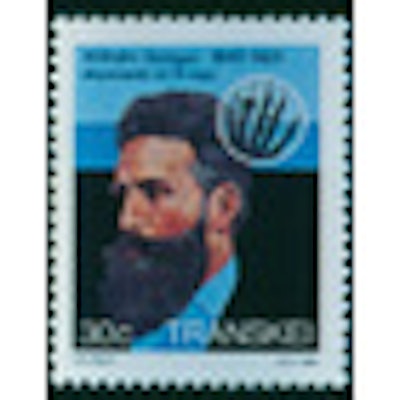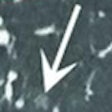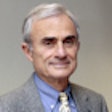
As RSNA plans to convene its 2012 meeting in just a few weeks, plans are already being laid for the 100-year anniversary of the Chicago congress, set to span both the 2014 and 2015 meetings. The upcoming celebration highlights how RSNA rose from humble Midwestern roots to become one of the pre-eminent medical societies in the world.
The 2014 RSNA meeting will feature events to celebrate the creation of RSNA in 1915 in the central part of the U.S. In the century since then, RSNA has grown to become the largest radiology society, and its annual convention in Chicago is the largest healthcare meeting in the U.S., attracting close to 60,000 attendees from all over the world.
Besides its major meetings and the growth of its two publications, RSNA has raised funds for scholarships and developed teaching materials for diagnostic radiologists, therapeutic radiologists, and radiologic physicists. Its annual meeting provides meetings and workshops for many other radiology societies and is a showcase for the latest technology from companies worldwide. In this vein, the 2014 and 2015 sessions will emphasize the centennial growth of RSNA and 100 years of the advancement of radiology.
Early roots
It was five years after Wilhelm Conrad Roentgen, the astute German physicist, had discovered x-ray beams and their potential application to mechanics in 1895. By 1900, individuals in most major countries in Europe and North America, including physicists and self-trained doctors, had concluded that x-rays would be a remarkable advancement in medical progress.
The first national organization of U.S. doctors applying x-ray techniques was the American Roentgen Ray Society (ARRS), founded just a few months after comparable societies in Germany, England, and France. ARRS attracted physicians from around North America, conducted an annual convention, and organized a journal.
By the 1920s, ARRS had focused on doctors in the eastern states and conducted most of its meeting in those areas. In those years, it was necessary to travel around the U.S. via railroads, so an increasing number of doctors becoming involved with x-rays found it inconvenient to attend the ARRS meetings.
One of the critics of the ARRS schedules was a fairly young physician in St. Louis, Edwin Ernst Sr., whose family has followed his path in radiology for the subsequent century. Edwin Ernst complained to ARRS leaders with the strong suggestion that the society should have its sessions in the central and western parts of the U.S.
When ARRS declined to take his advice, Ernst gathered three of his colleagues and proposed that they consider creating a separate radiology society. The colleagues were Dr. Miles Titterington and Dr. Gray Briggs of St. Louis, and Dr. Fred O'Hara of Springfield, IL. They agreed to launch a new organization, the Western Roentgen Society. To reach out to self-styled radiology specialists in their part of the country, they enlisted the help of George Bray, the manager of a company that created and marketed medical x-ray products.
In a short time, they had attracted 62 charter members, all but six of whom were doctors; the others were dentists, physicists, and x-ray salesmen. Their proposed first meeting was December 15-16, 1915, in Chicago. Only 30 members attended, a bit fewer than those attending the ARRS meetings.
The next Western Roentgen Society meeting in the summer of 1916 was held in St. Louis, with 40 new members attending. That year, ARRS held its meeting in Detroit. At the Western Roentgen Society meeting, O'Hara was chosen as president. Three others -- Dr. W.T. Dodds of Indianapolis; Dr. E.A. Merritt of Council Bluffs, IA; and Dr. Isador Trostler of Chicago -- were dubbed as trustees. It was a dozen years later before the founder, Edwin Ernst, was made president in 1928.
In a few years, the members of the Western Roentgen Society outnumbered the ARRS membership. In 1920, at the sixth meeting, the title was changed to the Radiological Society of North America. Dr. Benjamin Orndoff of Chicago, an academic leader of radiology, was the president. A journal was established in 1923, with Dr. Bundy Allen from the University of Iowa as its editor.
In 1916, a year after RSNA was founded, some of the radiologists around the country organized the American Radium Society (ARS), an organization to concentrate on the radiation treatment of cancer patients. In those years, most of the self-styled radiologists had to devote efforts to x-ray diagnosis and also to the use of x-ray tubes or particles and gas of radium to treat patients with cancer. In 1923, Dr. Albert Soiland, a radiation cancer specialist in Los Angeles and the 1922 president of RSNA, chose to organize the political structure he called the American College of Radiology (ACR).
During the 1920s, radiology in the U.S. continued to grow. Some individuals joined all of the organizations, and a few of the members, particularly those in academic medical institutions, found themselves becoming officers of the several radiology societies.
In 1932, leaders from the radiology societies began a serious discussion about creating an American Board of Radiology. This occurred in 1934, and the definitions and qualifications of radiology were established. RSNA, ARRS, ARS, and ACR were the sponsors and leaders of the board. The RSNA board members were Dr. Leon Menville of New Orleans, Dr. Merrill Sosman of Boston, and Soiland of Los Angeles. RSNA founder Ernst represented the ACR on the radiology board.
For the past couple of years, the RSNA board has been planning what it should do to celebrate the RSNA centennial. The plans include a major fundraising campaign for the RSNA Research and Education Foundation, a multimedia digital picture book, lectures on the history of radiology and RSNA's contributions, special exhibits at the two RSNA annual meetings, the publication of historic articles in Radiology and RadioGraphics, and special social events.
Dr. Reed Dunnick of Ann Arbor, MI, the 2014 president, and Dr. Ronald Arenson of San Francisco, the 2015 president, are coordinating the centennial ambitions, and other historic projects may be proposed and enacted.
Otha W. Linton, MSJ, retired in 1997 as the associate executive director of the ACR after 35 years. He also served as executive director of Radiology Centennial in 1995. Mr. Linton holds a bachelor's degree in journalism from the University of Missouri and a Master of Science in journalism from the University of Wisconsin. His work has been published widely in the U.S. and abroad, and he is a regular contributor to several journals including Academic Radiology, the American Journal of Roentgenology, Radiology, and the Journal of the American College of Radiology. He joined the ACR staff in 1961 and had a key role in its growth. Over the years, his responsibilities with the ACR included government affairs, public relations, marketing, publishing, industrial liaison, and international relations. Just before his ACR retirement, he became the executive director of the International Society of Radiology and served in that role until earlier this year. Also, since his retirement, he has written and published 14 histories of radiology societies and academic centers.








